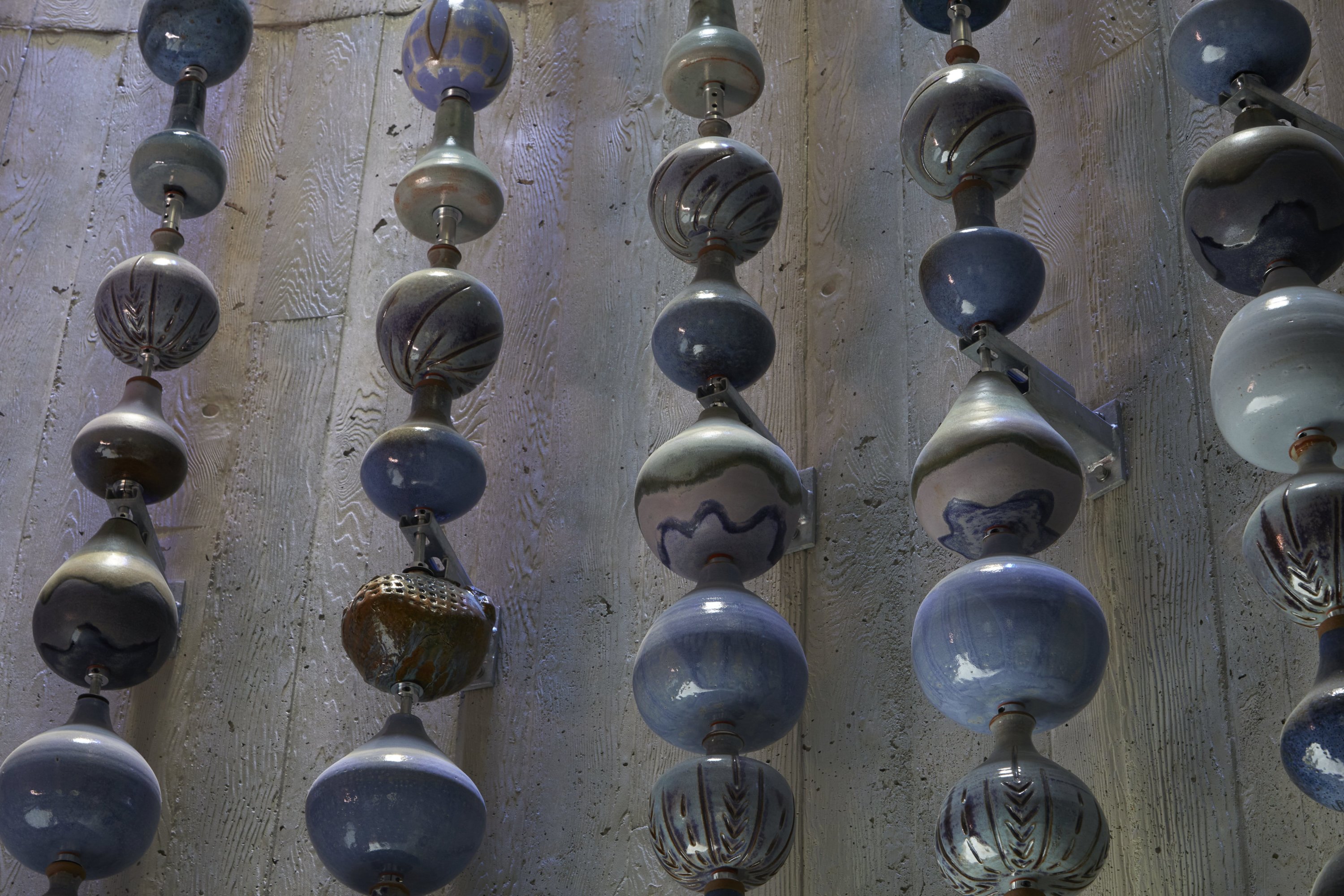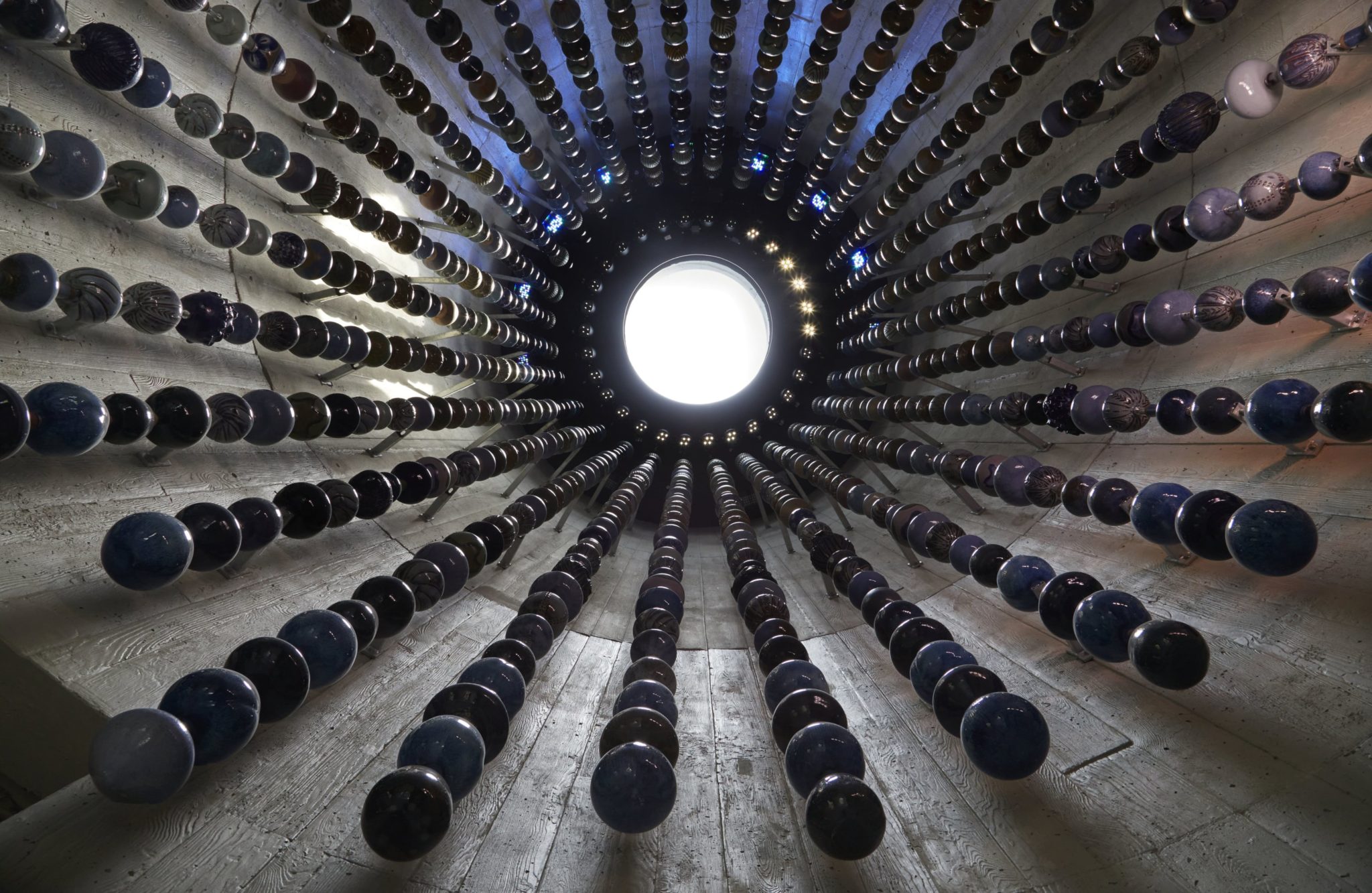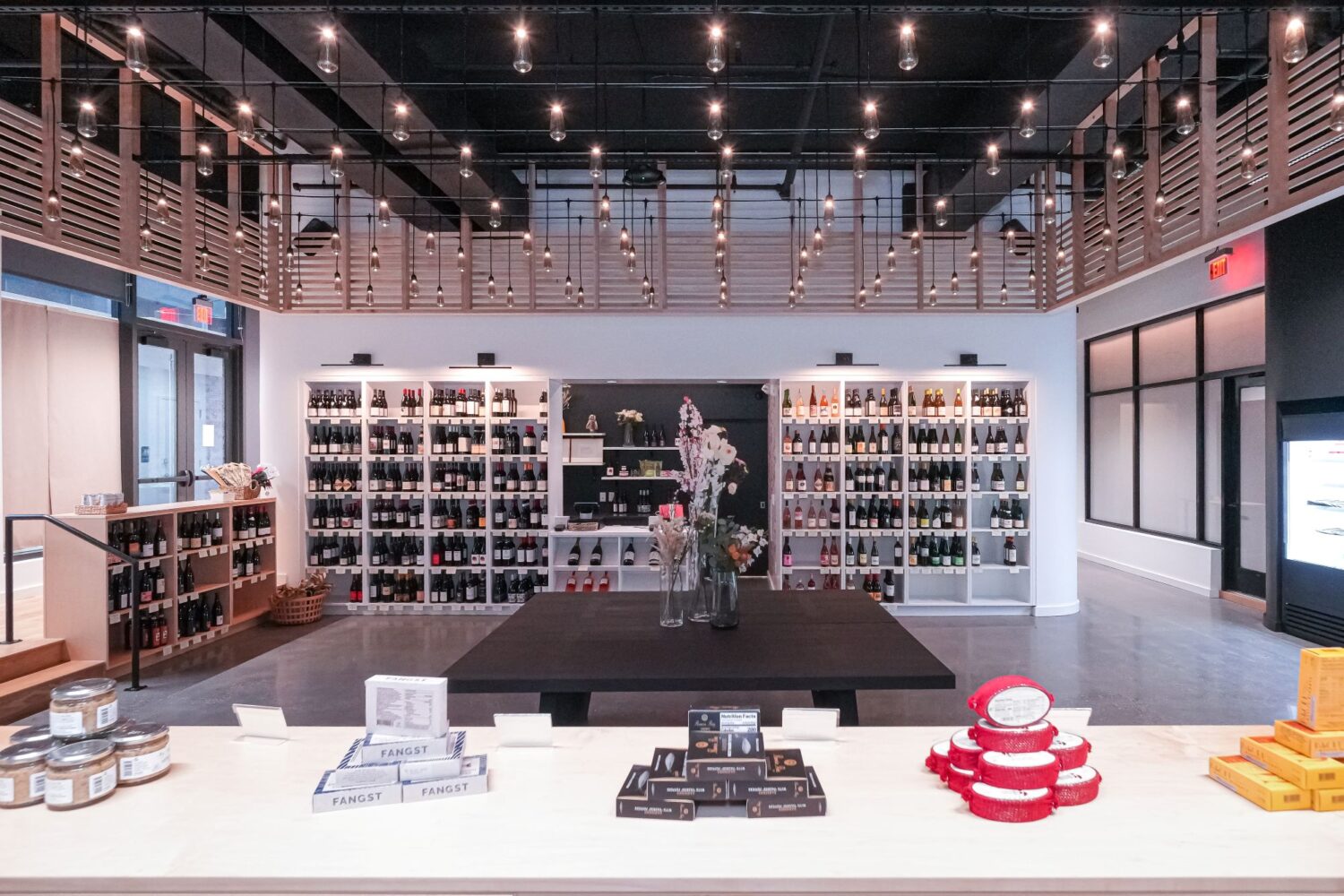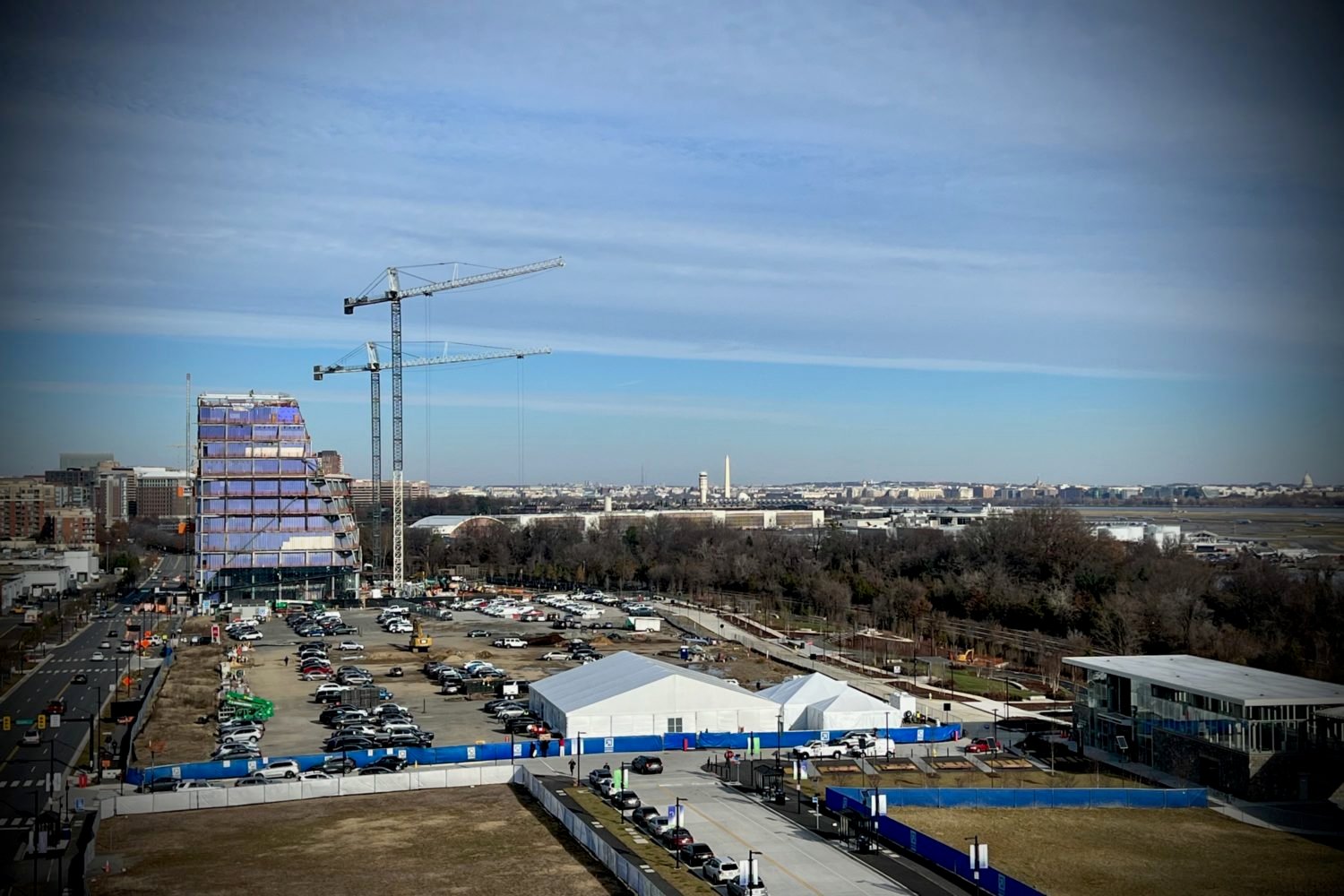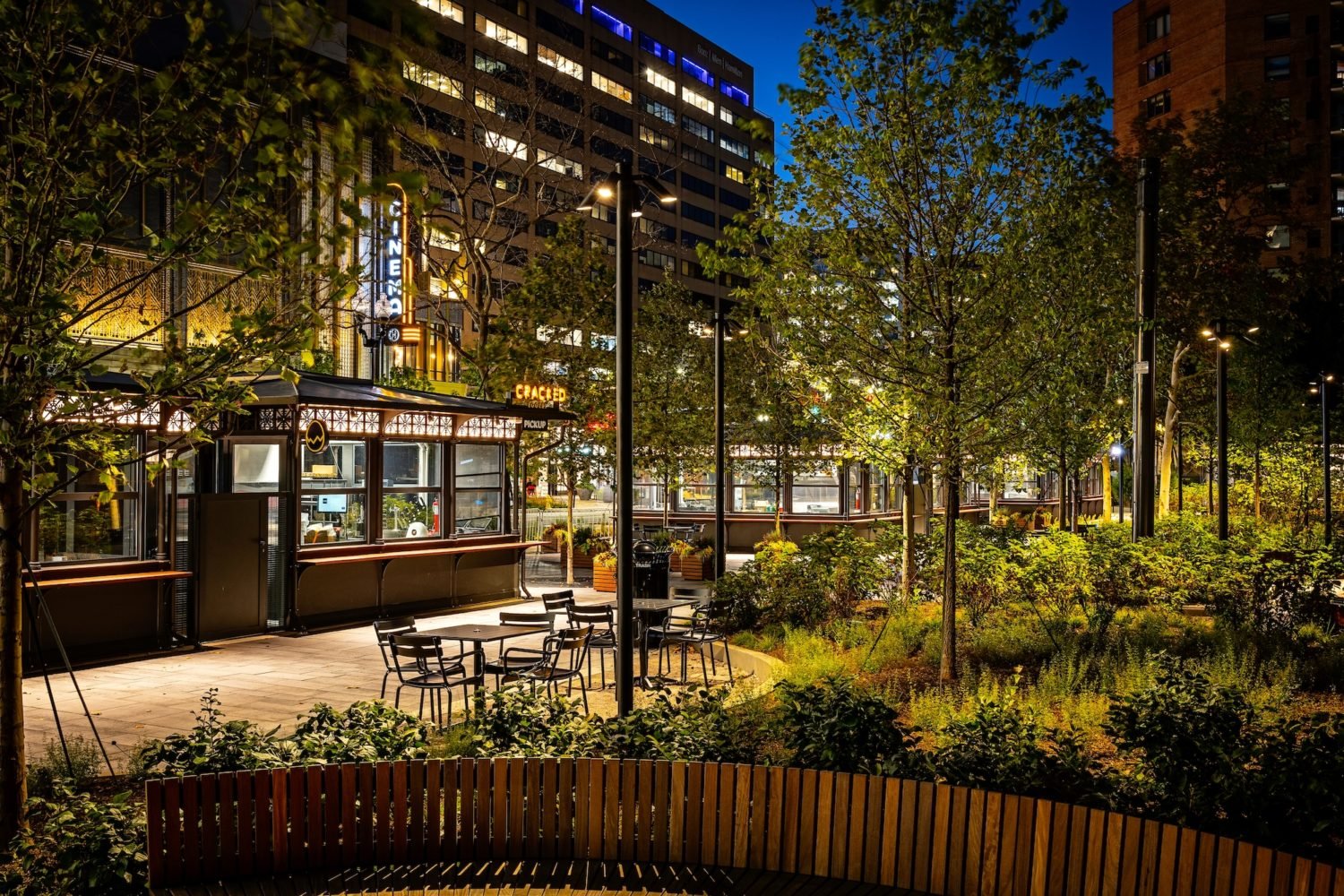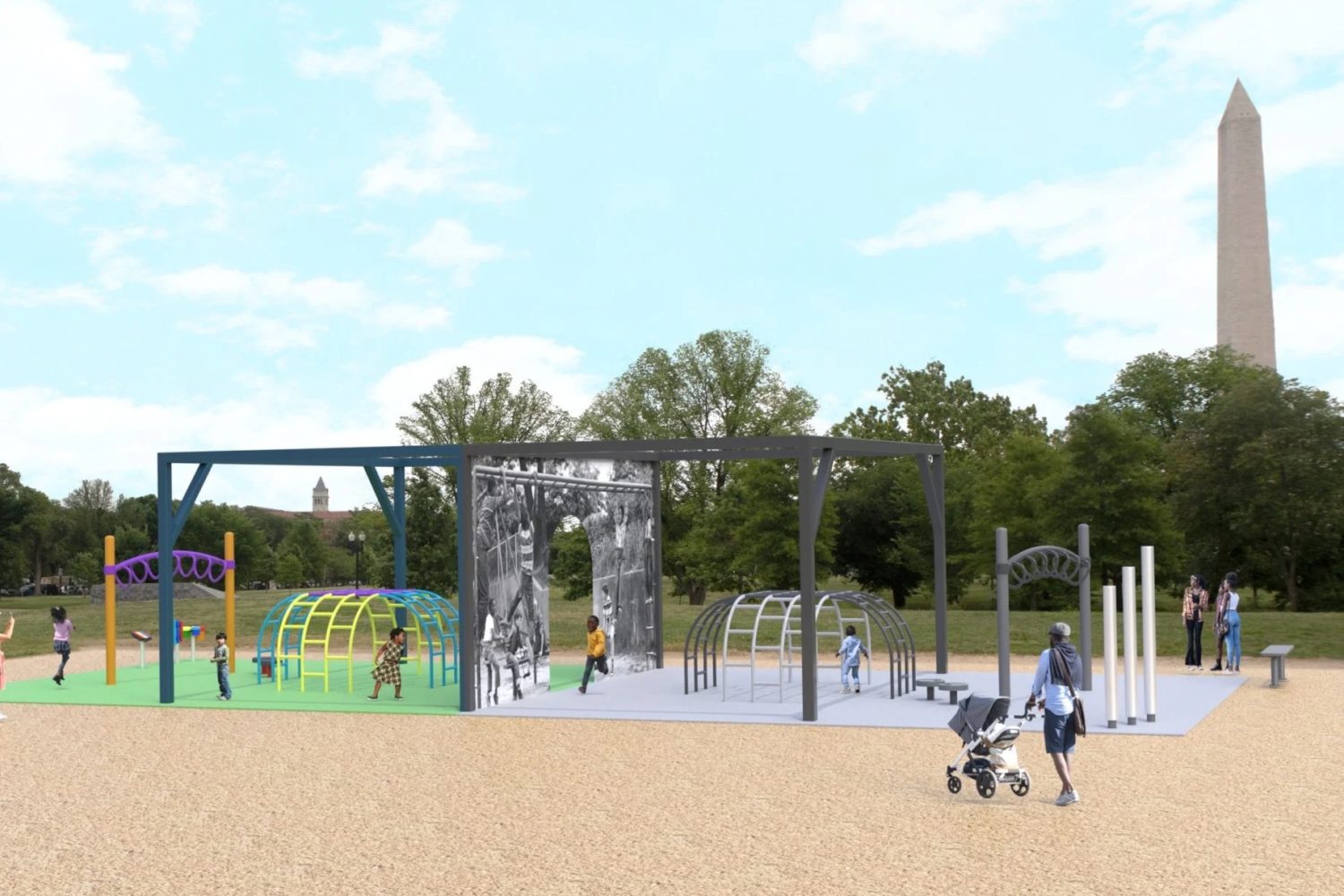At first glance, the new public art installation in Arlington’s Metropolitan Park outside of Amazon’s HQ2 campus looks fairly unassuming. While quite large, Queen City, the 35-foot-tall, 15-foot-wide cylindrical brick structure with “Queen City” written boldly on its exterior looks more like an old water tower than a deeply symbolic space—until you step inside. And that’s exactly what DC-based mixed-media artist Nekisha Durrett was aiming for.
When you walk through the bottom entrance of the structure you’ll see that the inside walls are covered from top to bottom in 903 ceramic teardrop-shaped “vessels,” as Durrett calls them. These vessels are homages to the former residents of Queen City, a self-sustaining Black community whose first inhabitants were descendants of Freedmen’s Village, a settlement for freed slaves in what’s now Arlington Cemetery that the federal government established in 1863. Located at the spot where a current-day cloverleaf joins Columbia Pike and Washington Boulevard, Queen City thrived from 1900 until it was demolished in 1941 to make way for the Pentagon building and the infrastructure around it. Exactly 903 residents were forced out with no compensation, resulting in emotional and economic loss—and inspiring Durrett’s 903 teardrops. Durrett enlisted the help of 17 Black ceramicists from across the country to craft the teardrops and bring her idea to life in a deeply collaborative, culturally fulfilling process.
Like many, Durrett had no prior knowledge of Arlington’s Black history before she was commissioned to build the piece, but that actually helped her crystalize her artistic intentions. “I started asking people, have you heard about Queen City? This Black community that was destroyed for the construction of the Pentagon? And people were just like, ‘What? No, I’ve never heard of that before.’ And so that reaction let me know that I was on the right path,” she says.
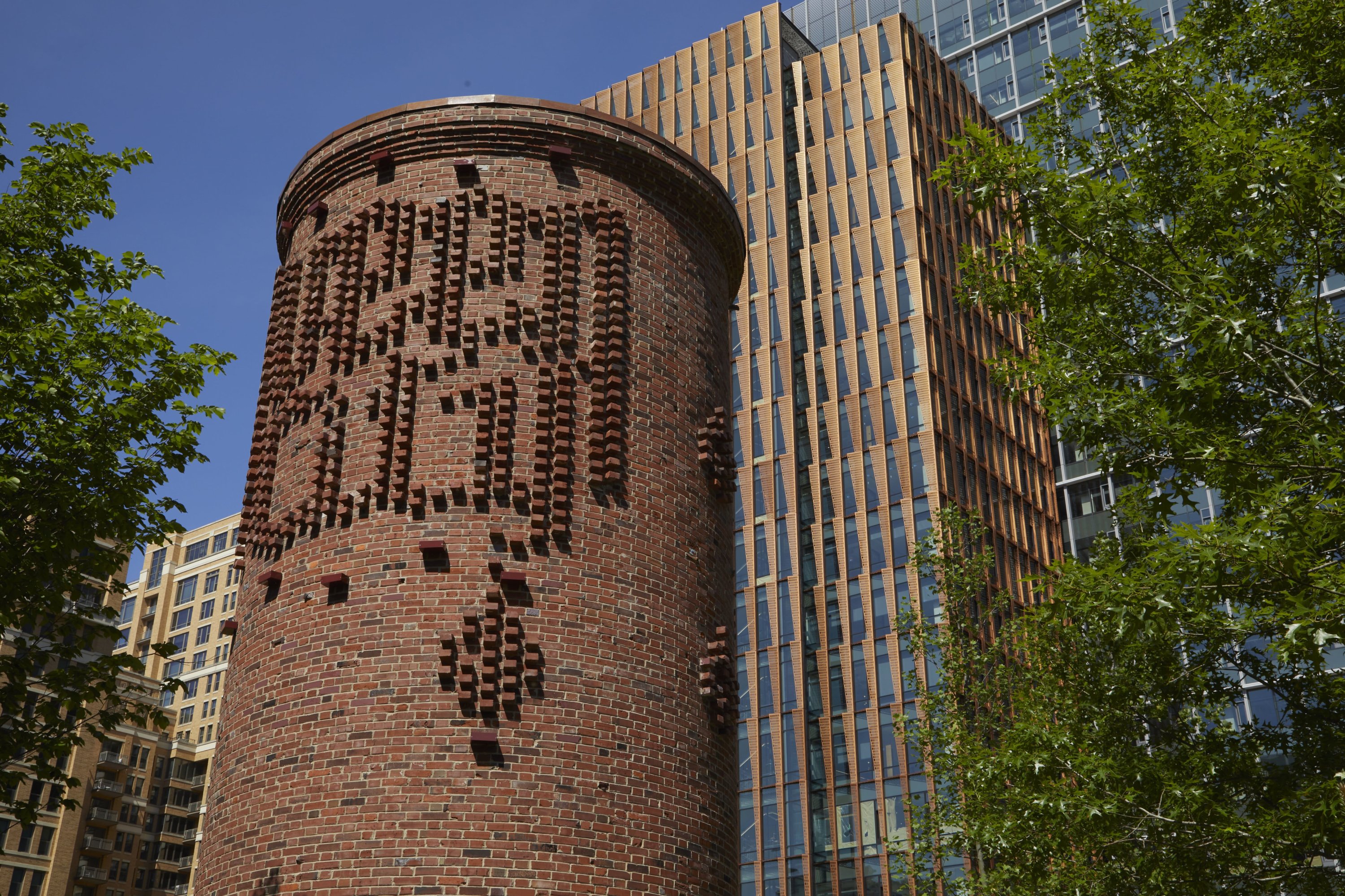
What Durrett did know is that she wanted the piece to be huge, as most of her work is. As a younger artist, Durrett often noticed that her creations were growing larger and larger, until a mentor finally suggested she start designing pieces specifically for outdoor display. In this case, Durrett says, she “wanted the space to feel out of scale with your own body, so that your eye would be drawn upwards. Looking up at these vessels, and then looking up toward the sky.”
The interior of Queen City—where the art actually lives—has a very solemn energy. Durrett calls it “cathedral-like,” a quality that contrasts with the busy public space where it resides. Mundane bricks on the exterior give way to a beautiful ceramic display inside, symbolizing the way Queen City’s buried Black history gets unearthed. It was important to Durrett that Queen City be displayed in a public space rather than a museum, somewhere it would be impossible to ignore or hide its significance.
“I think that just to make something visible that has been erased, or rendered invisible, is a very powerful thing. Once you know that something exists, then you’re implicated in a sense,” Durrett says. “And I think that is my role, just to bring forward something that has been there all along.”
